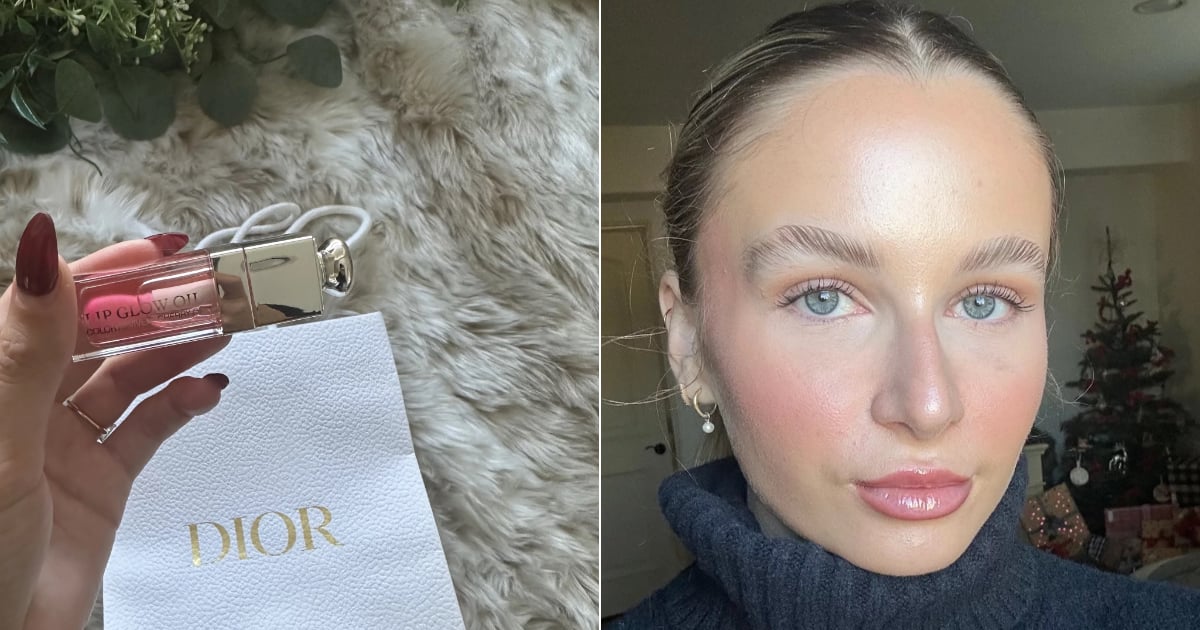Ajay Salpekar is an engineer by training, so it’s no surprise he’s adeptly built one of beauty’s biggest e-commerce platforms.
“I’m trained in building systems,” Salpekar said. “At Microsoft and then Amazon, that’s what I practiced.”
Although he made the jump to the commercial side during his time at Amazon, before moving on to the conglomerate side with Unilever, those early learnings as an engineer have defined how he spends his time now as general manager of beauty for TikTok, from creating viral moments to what he does when he’s not working. “My three kids are the center of my world,” he said. “There are a lot of Legos.”
Related Articles
Salpekar joined TikTok six months before the launch of the platform’s e-commerce arm and created a playbook that has change the playing field in beauty retail.
“Year One was about building something very quickly and partnering with early winning brands, and Year Two was understanding what drove tremendous scale very quickly, and scaling that methodology more,” Salpekar said. “Year Three is about amplifying that impact.”
Here, Salpekar breaks down why he’s big on beauty, how he’s giving viral brands longevity and where he sees TikTok sitting in today’s beauty ecosystem.
What has your career trajectory been like, and how did each step define how you approach your role now?
Ajay Salpekar: My career choices have been driven by curiosity, continually learning, continuous improvement and applying that to new problems. I started in technology, which is what gives me this lens of user-first thinking, and moving backwards from user experience.
The time I spent in Amazon, in the early days of the consumables business, gives me insight into what scaling a platform very quickly needs to look like from the brand and platform side. But the time I spent in CPG at Unilever gave me empathy for people in brand stewardship roles, because you have to grow the brand for the long term. It helps me think through the lens of large brands, midsized brands and small emerging brands.
At TikTok and TikTok Shop, we bring those three lenses together, thinking about the technology platform, the user’s perspective and advising brands on navigating creative commerce in a way that’s right for them. User acquisition, retention, all of that comes together to build what we call discovery commerce.
You started pre-launch at TikTok and the rest is history. What has it been like building such a vast ecosystem so quickly?
A.S.: One key part of the trajectory has been education and bringing brands along. Creative commerce is relatively new to the U.S., and we spend a lot of time meeting brands and explaining to them the power of the creator pyramid, benefits of engaging with top-tier, mid-band and small creators. How do you, as a brand, think of the entire creator pyramid and not try to curate the entire experience end-to-end, but test and learn and experiment and learn quickly? This is the journey, and it has been characterized by bringing brands along that tend to have a more open mind to testing and learning and partnering closely with creators.
What role do you think discovery commerce will have in the beauty retail ecosystem?
A.S.: TikTok Shop’s role in commerce and shopping is what differentiates it and has made it so successful. Shopping journeys aren’t linear anymore, they haven’t been for a long time. But classic e-commerce tends to be pretty linear. You know what you’re looking for, you search for it, you find it, compare prices, check out and it’s on your doorstep. That works well if you know what you’re looking for, but it’s less good for discovery, nuance or the inspiration of discovering something new. That’s where we come in.
At the center of this is the notion that if brands partner with creators, it gives rise to compelling content that’s relatable, easy to access. TikTok is an entertainment-first app, and it’s a pretty frictionless experience where content has an uncanny way of finding its way to you that is tailored to you. The industry has embraced this in a major way. Particularly in beauty and CPG, discovery really matters, and they’re catching on that a new generation of shoppers’ shopping habits are being formed on TikTok.
What are the technologies and forces that are most interesting to you right now?
A.S.: A study that GlobalData did on TikTok Shop shows that 83 percent of shoppers have discovered a new product on TikTok Shop, and 70 percent have discovered a new brand. I’m sure you’ve had that moment where you’re scrolling, not looking to shop, and then you find something that catches your eye that you have to have. We’re teaching brands how to engineer those moments by picking the right hero products, partnering with the right creators, making sure that the offering is differentiated. That’s what makes this flywheel go around.
Beauty tends to be very trend-driven, very inspiration-driven, it’s highly contentable and there’s an educational component. For example, how do you layer fragrances or achieve a certain look? TikTok has more than 170 million active unique users, and more of them are discovering they can shop, and we drive that.
Another technology that’s taking off is live selling. Most of the business is still short video, because that scales faster, but live is fantastic for repeat purchases as brands go live. Brands like Phlur, in particular, tend to do really well. Medicube has built a massive U.S. business off of TikTok shop, and they tend to do really well in real life. This drives repeat and drives followership.
We also find brands using AI tools to find creators to match with. We have a very data-driven creator brand matching ecosystem, and in addition, brands could look at TIkTok content that’s working, and the way they keep up is by finding similar types of creators who have created resonating content, and using AI tools to do that.
How do you stay attuned to what’s happening on TikTok?
A.S.: The notion that any one of us could keep up with everything happening is not going to happen, simply because everyone’s feeds are so different. It is tailored to you. You can go really deep in a particular space, but a few things that certainly help is exploring content, not just related to your brand or what’s shoppable, but by being curious about what content there is, what trends are breaking and seeing if those trends are maybe a match for a new launch or creator partnership for you. Then, you double down on that.
What are the commonalities among brands that have turned one-time virality into a steady business?
A.S.: The first thing is a beginner’s mindset. They tend to do well and their success is more correlated with how open-minded they are and how open they are to testing and learning, rather than brand or budget size. You are limited by your creativity and your ability to bring unique products to market and partner with creators, not just the size of the brand.
The second thing that matters is having a strong brand or product assortment that is clearly differentiated. If you take Peter Thomas Roth, which has been around for a long time, their Instant FirmRX line was a viral hit because it’s visually so apparent. When you put the product on in 30 seconds you actually see it work. They took those insights and came up with a fantastic new launch, Collagen Infusing Eye Masks, which became an instant top seller because they change color — it’s very visual. Tarte also has new formats or applicators, same with Wonderskin and their lip stain.
Lastly, brands that recognize TikTok Shop as an extension of their direct-to-consumer business tend to do better. Most of these brands use TikTok Shop to test and learn about new products, formats and bundles. TikTok Shop has become a place for them to launch new innovations before they go into direct-to-consumer or brick-and-mortar, because it builds hype. They see a halo. We always say that what happens on TikTok Shop doesn’t stay on TikTok Shop. That halo effect is observed time and time again.

How do you think about evolving the user experience?
A.S.: We’re constantly evolving the product roadmap based on user feedback, seller feedback and creative feedback. We can’t share our exact roadmap, but a few things do matter to us: one is a much wider assortment of brands, because it’s still a young platform. While we have differentiated brands, there’s so much out there. Look at K-Beauty or woody fragrances, which are all the rage right now, and are going much more mainstream. There are so many demand spaces in every category that we continue to explore, and content tells us where the next trend is. We’re doing this across every category you can imagine.
The second priority is even deeper partnerships between creators and brands. Increasingly, brands are turning to creators to launch net-new line extensions, partnering with them to go live a few times a week, and they both benefit. Creative collaboration is a big deal. And live selling is starting to take off. Seventy-five percent of live customers are repeat shoppers. If you think about short video as a way to drive trial and discovery, live is a great way to drive repeat.
As retailers add user-generated content to product pages, or create their own creator networks, how are you thinking about keeping TikTok Shop differentiated?
A.S.: TikTok Shop landed on the scene because it was great for discovery, and you can see how we’re also trying to drive repeat purchase. But really, we’ve only scratched the surface on discovery. To contextualize this, we have more than 170 million monthly active unique users, which is pretty much the entire consumer demographic. Most beauty CPG brands tend to go after those spending a lot of time on the app, and they’re only really found on TikTok.
One pleasant surprise is that search in the app has grown leaps and bounds. Three out of four TikTok users use search, and one in four goes to search in the first 30 seconds. What that’s resulted in is that the number of searches with shopping intent has grown 133 percent in the first six months of this year. While our overall business is doubling year-over-year, the number of searches is growing at an even faster rate. It’s a leading indicator of where demand is going to occur, and how we’re going to capture it.
What are the commonalities between the platform’s most successful creators?
A.S.: Whether they’re creators with large followings or small ones, or whether or not they’re sufficiently monetized, is that they create compelling content with a high conversion efficiency. That is because they’re very choiceful about which brands to partner with and which products to use, because it has to match their own brand ethos, skin type and follower demographics. We do find that creators tend to be choiceful about which brands they promote so that it resonates with their audience.
The second is that they tend to make content that’s relatable, which is certainly attractive to Gen Z. They trust creators more for their relatability, not just expertise or have some kind of credibility in a particular category or space. Also, creators are more successful when they have more meaningful relationship with brands. Creators who post a brand for multiple months in a row, or brands and creators partner around new innovation, tend to do really really well. We find that creators who have more of an emotional bent and are showing how-to, particularly in beauty, tend to do well — there’s a demand for it. Short of going into store, which not everybody can manage all the time, TikTok is how a lot of people get education on products and how to use them.



